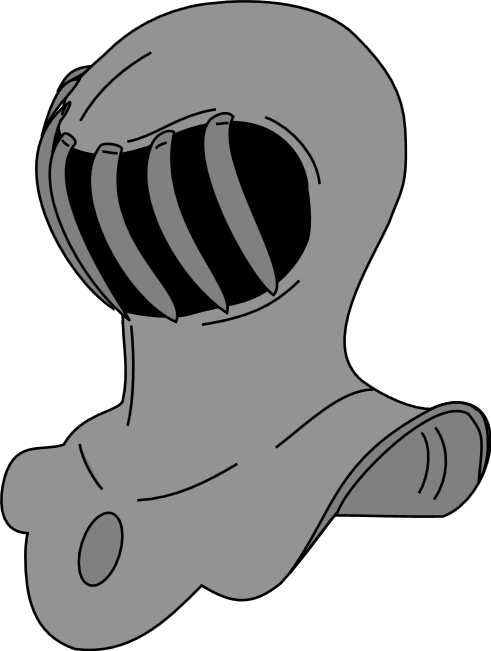
As you have seen through many examples, the shield is but one part of a coat of arms. The full complement consists of a helmet, the crest, a wreath, a badge, a flag, a banner, and motto.
Originally the crest was the ornament of the helmet or headpiece, and also provided protection against a blow. In the early coat of arms the crest was hardly noticed, but in later armorial grants it came into general use. The roll or chaplet above the shield supports the crest. It is supposed to represent a twist of two silken cords - one tinctured like the principal metal - the other like the principal color in the arms. Wreaths may also be circular, but the straight wreath is by far the more common. The helmet is borne above the shield and beneath the crest. Initially, the specific style of the helmet was used to denote the rank of the wearer, for example open helmets were used by high-ranking knights and closed helmets by lesser nobility. Currently, it is up to an artist to decide what type of helmet to use in the construction of a coat of arms. The helmet and crest symbols are traditionally surrounded by a mantling which initially was a type of cloth fixed to the back of the helmet to protect the soldier from sunlight. Nowadays it is depicted as a drapery hanging from the helmet.